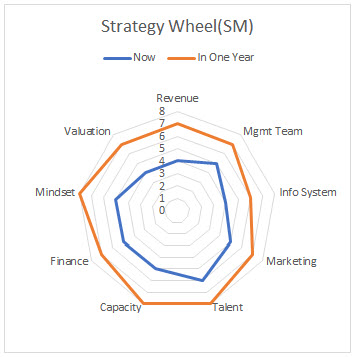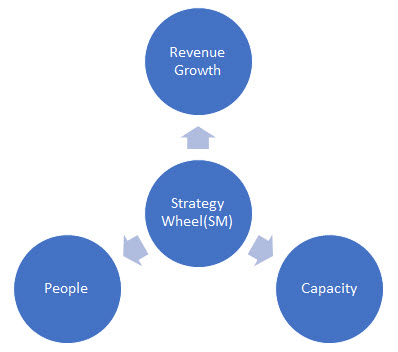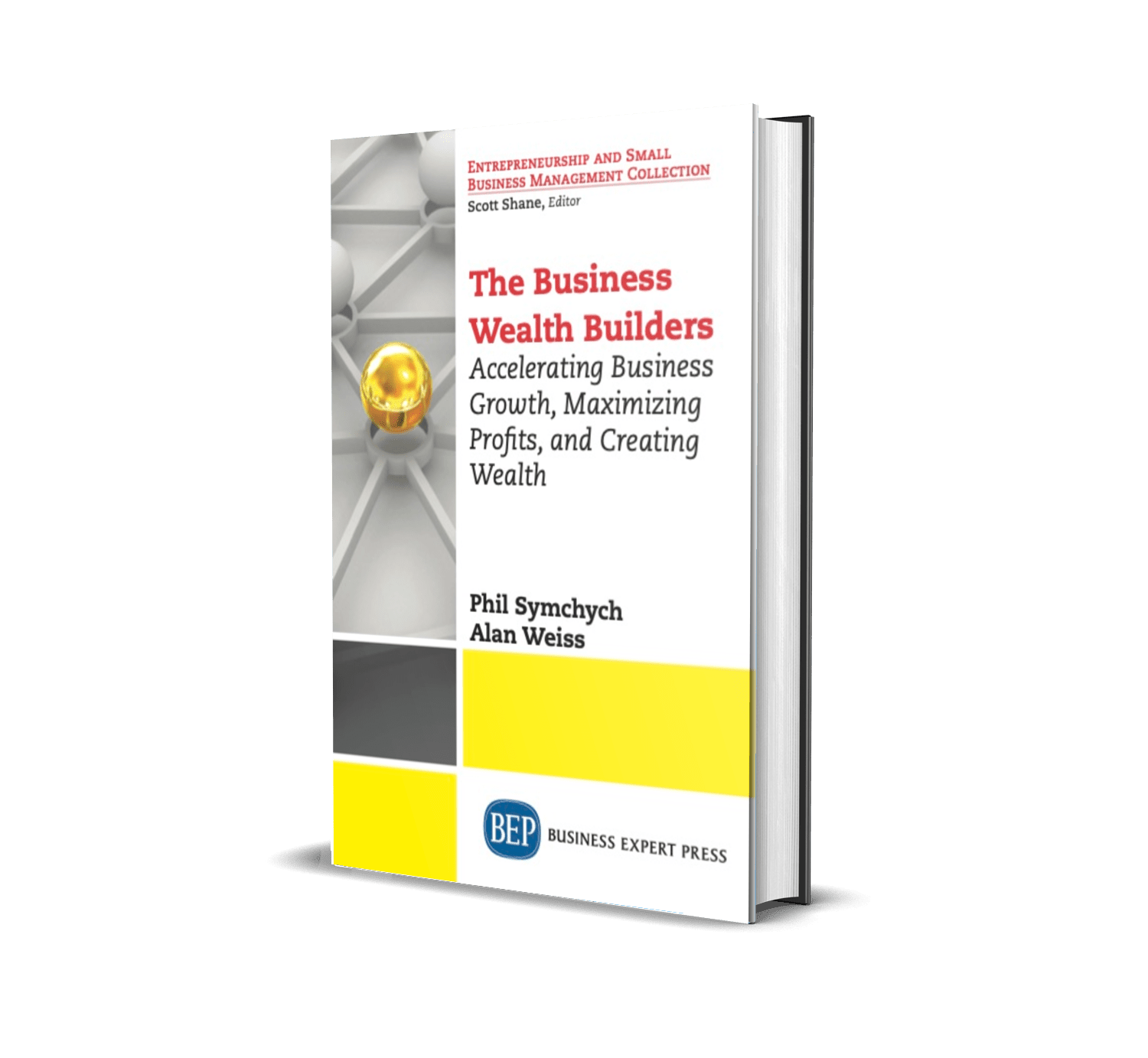Last week, I introduced the Strategy WheelSM. This special issue is a little longer in length because I want to present the ideas and framework all at once so you can start using it right away. As you know, speed is important in business!
What Is Strategy and Why Does It Take So Long?
I developed the Strategy WheelSM because setting strategy can and should be done in one day and because reviewing and updating your strategy should be done at least quarterly.
Remember, I define strategy as the proactive and intentional focus and alignment of your resources to create optimal value and quantifiable results for your ideal customers. Good strategy creates a sustainable and differentiated competitive advantage in the market.
The problems with a lot of strategic planning processes are numerous. Here are a few:
- it’s glorified budgeting (“we want 2% more than last year”)
- it’s not strategy at all (“let’s keep doing the same thing”)
- it wastes people’s time doing low value exercises (like SWOT analysis)
- it ignores the customer
- it ignores your front-line employees who interact daily with your customers
- it follows last year’s process which may or may not be relevant any more
- it uses buzz words and good intentions like agility and innovation, but repeats some or all of the above,
- it creates fancy binders instead of one page action plans, and
- very dangerous…it’s limited to your own thinking.
Answering the phone or taking a customer order online are not strategy. Those are transactions. Becoming part of your customer’s DNA and helping them to plan their futures and improve their results IS strategy.
The Strategy WheelSM process is powerful because it’s simple, it’s visual, it’s interactive, and, the best part, it uses numbers (I love numbers!!).
Figure 17.1 A sample Strategy WheelSM

The Strategy WheelSM is focused on where you are today and where you want to be in one year based on the key success factors that are relevant for your goals. It’s effective because it’s focused on action and on measurable results.
I’ve used this process to help mid-market companies identify strategic opportunities for creating a sustainable differentiated advantage in the market. From their strategy, they develop action plans and metrics that drive revenue, accelerate market growth, and hold people accountable for results. (If the last part about accountability makes you uncomfortable, we need to talk.)
Today, we’ll expand on the Strategy WheelSM model and process to help you get started embedding it in your business growth processes.
Below, we discuss short powerful questions to ask your executive team so you can develop and implement growth plans for the next week, the next quarter, and the next year. Let’s get started.
Figure 17.2 The Three Keys to the Strategy WheelSM

Defining the Strategy WheelSM
The Strategy WheelSM has three main components:
- Revenue Growth
- Revenue is the main purpose of your business so you can serve more customers and create a sustainable and valuable company for your shareholders.
- If you’re not growing by 10% or more per year in a normal market, or at least 5% per year in a slower market, then you’re shrinking, and that’s not good.
- Revenue growth drives earnings growth which drives dividends and valuation growth.
- Capacity
- Capacity is your ability to deliver a product or service to your customer in the right time, quality, volume, and characteristics to help your customer generate results.
- You need excess capacity to aggressively market your business and grow your revenues, you need the capacity to deliver.
- If you’re not confident you can increase capacity by 20% or more in the short term, then that lack of confidence is coming through in your communications and selling efforts, and it’s hurting your business.
- Improving efficiency, adding more shifts, scheduling in the future, and improving work flow can easily increase your capacity by 50% or more in the short term. Increasing capacity helps you boldly sell more.
- People
- Your employees and management team are the foundation for your culture and your business performance.
- Your business growth potential and your customer relationships are only as good as your people.
- Yet many companies spend more money watering the flowers, washing the windows, and painting the lines in the parking lot than they do on employee development.
The Strategy WheelSM Quiz
A short quiz: on a scale of 1 (terrible) to 10 (awesome), how would you rate your company TODAY on the three key areas:
- Revenue growth / 10
- Capacity / 10
- People / 10
- Total / 30
Next question, what do you need these answers to be in one year?
- Revenue growth / 10
- Capacity / 10
- People / 10
- Total / 30
What’s your gap between line items and between the totals? Those can become your priorities.
Congratulations! In less than one minute, you just completed a Strategy WheelSM. (If you’re a business owner and want to discuss your results, give me a call!)
The Strategy WheelSM Framework
Okay, let’s put the Strategy WheelSM into action in your business. Ask your executive team the following questions.
Revenue Growth
- Do we have the right offerings?
- Do we have the right customers?
- Do we have the right prices?
- Do we have the right relationships?
Capacity
- How is our quality?
- Can we customize?
- How is our speed?
- Are we scalable?
People
- How are we determining a person’s natural talents? (note: it’s not about their passions)
- How are we helping our people to nurture and develop their talents?
- What is our culture?
- How is our leadership?
For each of these questions, you can measure and draw the self-ratings on a scale of 1 (terrible) to 10 (awesome) for:
- Where you are now, and
- where you want to be in one year.
- The gaps can identify your priorities.
- Next, you develop action plans and metrics.
- Then you implement, measure and report results at least quarterly, and preferably weekly on the most important metrics.
- Make adjustments in real-time.
- Measure, re-evaluate, and re-adjust as necessary.

